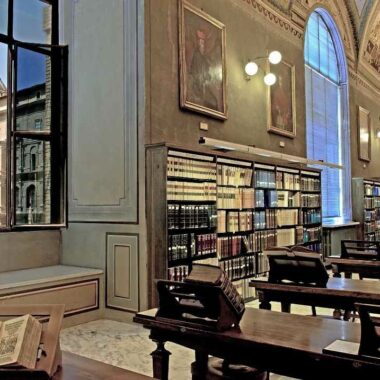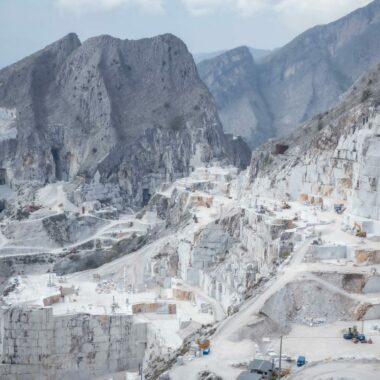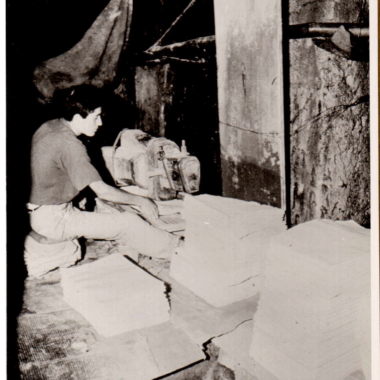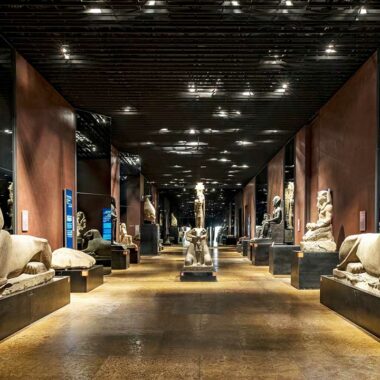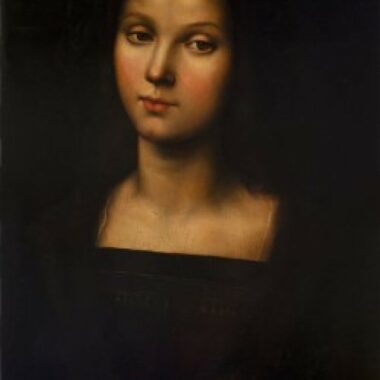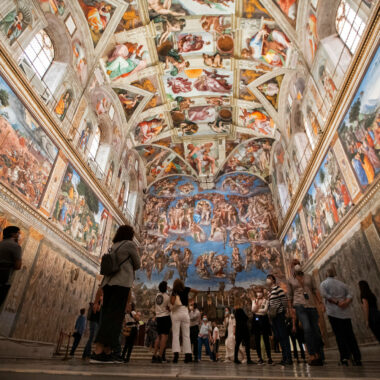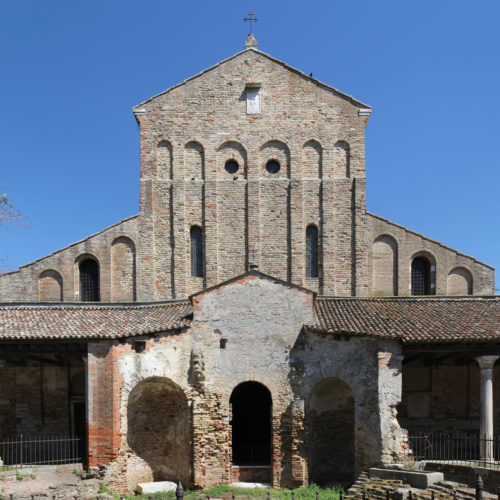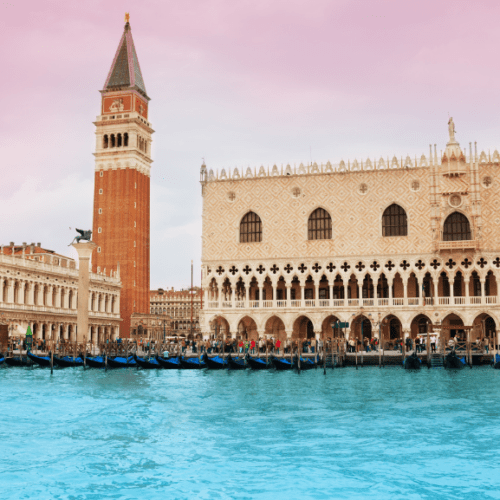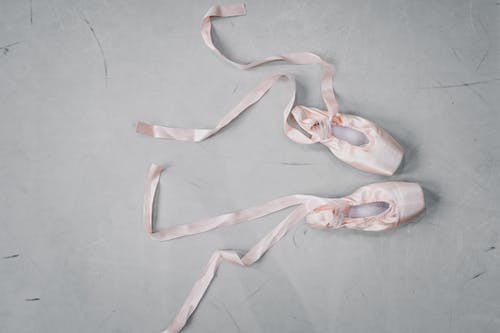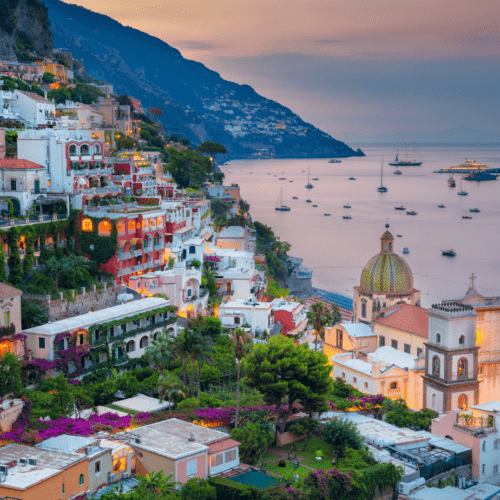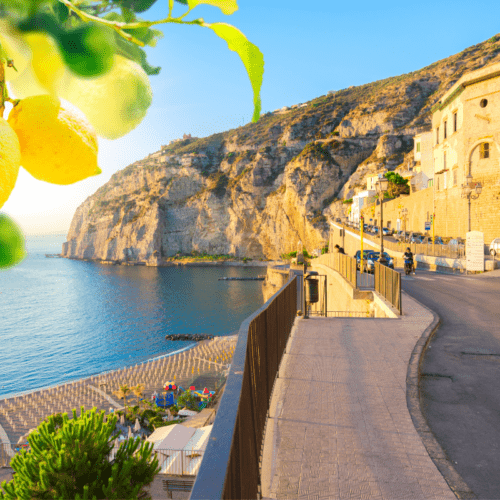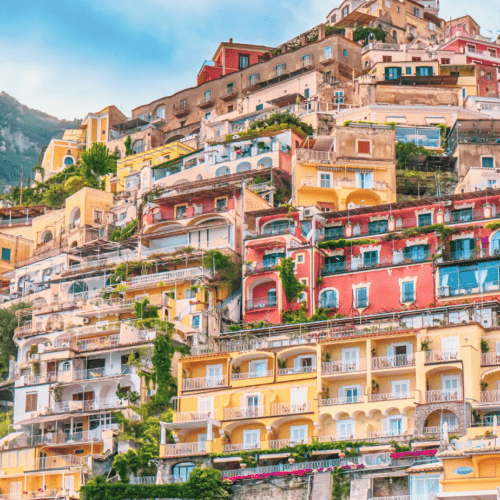Erotic and sexy frescoes in Pompeii. Are you curious already?
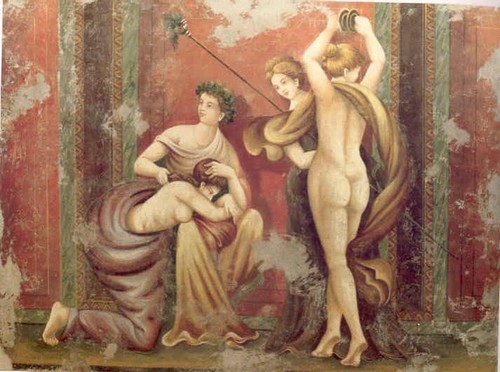
Pompeii’s Phallus: Eroticism in Ancient Italy
Pompeii is silent. To modern visitors, the city, stuck in time, appears quiet. Almost peaceful. Or like a haunted place. Since people lived and died here almost 2000 years ago.
In fact, in the first century A.D., Pompeii was a thriving city on the Mediterranean coast. Wealthy Romans owned vacation villas there and Pompeii was a major trade city. A visitor could hear languages from every corner of the planet. Pompeii had the largest amphitheater in Roman Empire. Also, the city featured immense sports arenas, vineyards, four luxurious bathhouses, and temples to ten different deities.
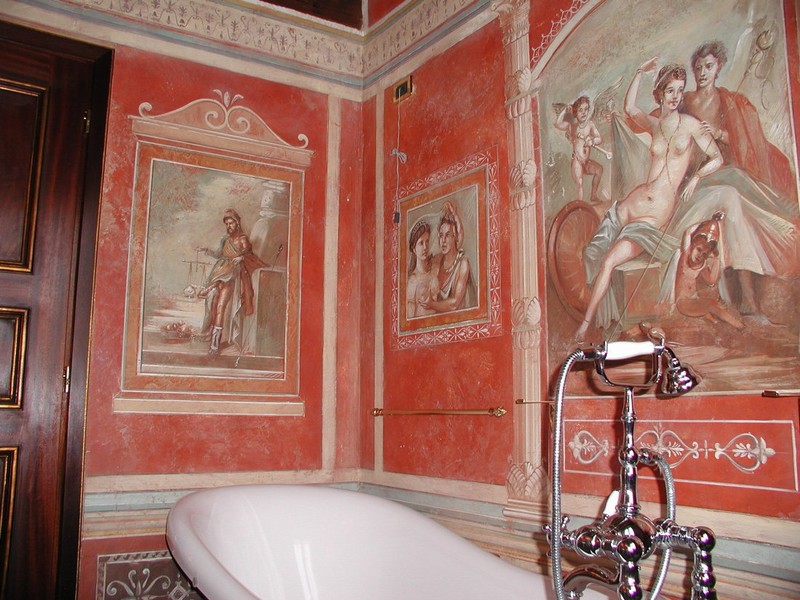
Life was grand in Pompeii during the Roman Empire
The city seemed invincible.
Until a summer morning on August 24th, 79 A.D. That’s when the nearby Mount Vesuvius erupted. The citizens of Pompeii were used to the mountain’s rumbling, so they didn’t take it seriously. At least at first. Then, burning ash and cinders descended, trapping and killing one-tenth of Pompeii’s inhabitants.
Pompeii was buried for centuries, hidden from view until the eighteenth century. That’s when a team of archaeologists began digging, discovering the wonders of the long-forgotten city. The researchers found almost-intact homes and temples, tiled floors, and unbaked bread. Furthermore, they dag out details of the very citizens of Rome in their death throes.
Finall,y, the beautiful frescoes in Pompeii, preserved in perfect, vivid color.
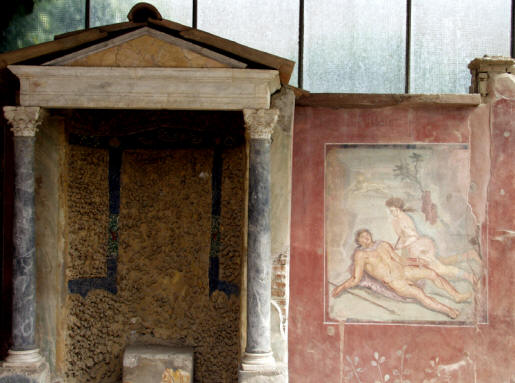
One such room was called the “Cabinet of Obscene Objects” later renamed the “Cabinet of Restricted, or Secret, Objects.” In Pompeii itself, women tourists weren’t allowed to view some of the major works of art. That’s until the second half of the twentieth century. Supposedly, to protect their delicate natures.
What could possibly cause this much furor? Sex, of course.
Sexy frescoes in Pompeii
Myth:Pompeii graffiti & sex appeal – BBC History .
Many cultures throughout the world have traditions of erotic art. Pompeii, as a thriving city in the Roman Empire, had more than its share.
Erotic symbols abound on paving stones and walls, in frescoes and sculpture. The most prominent – no pun intended – is the phallus.
Symbols in Pompeii
In Pompeii, the meaning of the phallus depended on the context. For example, it was a form of protection against the evil eye. It was a symbol of good luck and it often served as a functional part of the sculpture. Like the water spout for a fountain or a handy hangar for decorations. Sometimes, the phallus was a steed, ridden by a god or a dwarf to some unknown (but undoubtedly erotic) destination.
And if you look closely at the paving stones in the main forum area, and in the stones of the walls, you will discover something. In fact, these phallic symbols point the way to the tiny brothels of the ancient city.

Phallus symbols weren’t the only erotic images. In most homes, no matter how small, frescoes adorned the walls. In many of these frescoes in Pompeii, men and women cavorted in all manner of sexual adventures, positions, combinations, and levels of enjoyment. Not infrequently, these frescoes portrayed men enjoying the charms of a, particularly arousing animal. Like Pan, the half-god and half goat, who ran rampant, having sex with different creatures.
Pompeii, why so horny?
This has been discussed since the discovery of te ruins. Of course, the answers are varied and sometimes conflicting.
One factor could be that in Pompeii, as in much of the ancient world, men were the ones in charge. It was acceptable for a woman to own a business if her husband or father had left it to her upon his death. Women could also distribute political material or be a prostitute. Therefore, the argument goes, men left to their own devices turned their homes and surroundings into teeming dens of iniquity.
We know that in Pompeii, sex wasn’t taboo. There were fewer prohibitions and less denial. The motto of the city was “enjoy life while you have it, for tomorrow is uncertain.” Surely, the physical joys of life were included. The erotic frescoes in Pompeii have caused both outrage and appreciation. Perhaps society has changed too much.
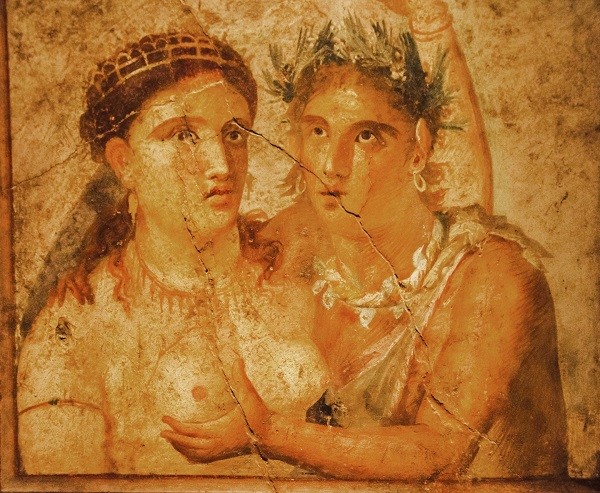
And if this doesn’t cause your delicate heart to flutter too much, or throw you into doubt about your manhood, take a short trip to the National Museum of Naples. Ask the floor guards or the museum workers to show you the Room of Secret Objects, and spend an hour or so perusing the beautiful objects of desire on display there.
Through its art and its history, the silent streets of ancient Pompeii are still speaking to us. It’s a world completely alien from our 20th-century ideas of proper and moral and allowable. And those secret objects might just hold a key to understanding not only the long-gone inhabitants but ourselves.
And if nothing else, you’ll have a great time giggling, blushing, lusting, or appreciating as you explore the ancient world’s views of life, love, and the pursuit of… each other.










